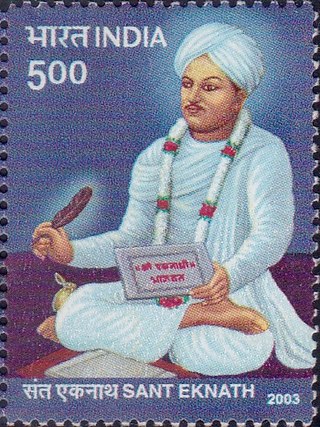This article needs additional citations for verification .(June 2022) |
Tulu Brahmins or Tuluva Brahmins are the inhabitants of Tulu Nadu, also considered a part of Parashurama Kshetra which extends to Kerala.
They consist of following: [1]
This article needs additional citations for verification .(June 2022) |
Tulu Brahmins or Tuluva Brahmins are the inhabitants of Tulu Nadu, also considered a part of Parashurama Kshetra which extends to Kerala.
They consist of following: [1]

Tulu is a Dravidian language whose speakers are concentrated in Dakshina Kannada and in the southern part of Udupi of Karnataka in south-western India and also in the northern parts of the Kasaragod district of Kerala. The native speakers of Tulu are referred to as Tuluva or Tulu people and the geographical area is unofficially called Tulu Nadu.

Tulu Nadu or Tulunad is a region and a proposed state on the southwestern coast of India. The Tulu people, known as 'Tuluva', speakers of Tulu, a Dravidian language, are the preponderant ethnic group of this region. South Canara, an erstwhile district and a historical area, encompassing the undivided territory of the contemporary Dakshina Kannada and Udupi districts of Karnataka State and Kasaragod district of Kerala state forms the cultural area of the Tuluver.
Deshastha Brahmin is a Hindu Brahmin subcaste mainly from the Indian state of Maharashtra and North Karnataka. Other than these states, according to authors K. S. Singh, Gregory Naik and Pran Nath Chopra, Deshastha Brahmins are also concentrated in the states of Telangana (which was earlier part of Hyderabad State and Berar Division), Andhra Pradesh and Madhya Pradesh (Which was earlier part of Central Provinces and Berar) Historian Pran Nath Chopra and journalist Pritish Nandy say, "Most of the well-known saints from Maharashtra, Karnataka and Andhra Pradesh were Deshastha Brahmins". The mother tongue of Deshastha Brahmins is either Marathi, Kannada or Telugu.

The Tulu people or Tuluvas are an ethno-linguistic and ethno-cultural group from Southern India. They are native speakers of the Tulu language and the region they traditionally inhabit is known as Tulu Nadu. This region comprises the districts of Dakshina Kannada and Udupi in Karnataka and part of Kasaragod district in Kerala, with Mangalore, Karnataka being the commercial hub. The Census report of 2011 reported a population of 1,846,427 native Tulu speakers living in India.

The Chitpavan Brahmin or the Kokanastha Brahmin is a Hindu Maharashtrian Brahmin community inhabiting Konkan, the coastal region of the state of Maharashtra. Initially working as messengers and spies in the late seventeenth century, the community came into prominence during the 18th century when the heirs of Peshwa from the Bhat family of Balaji Vishwanath became the de facto rulers of the Maratha empire. Until the 18th century, the Chitpavans were held in low esteem by the Deshastha, the older established Brahmin community of Karnataka-Maharashtra region.
Karhaḍe Brahmins are a Hindu Brahmin sub-caste mainly from the Indian state of Maharashtra, but are also distributed in states of Goa, Karnataka and Madhya Pradesh.
Telugu Brahmins are Telugu-speaking Brahmin communities native to the Indian states of Andhra Pradesh and Telangana. They fall under the Pancha Dravida Brahmin classification of the Brahmin community in India. Telugu Brahmins are further divided into sections like Vaidiki, Niyogi, Deshastha, Dravida, Golkonda Vyapari among others.

Tigalari, also known as Tulu script, is a Southern Brahmic script which was used to write Tulu, Kannada, and Sanskrit languages. It was primarily used for writing Vedic texts in Sanskrit. It evolved from the Grantha script. It is called as Tigalari lipi in Kannada-speaking regions and Tulu speakers call it as Tulu lipi. It bears high similarity and relationship to its sister script Malayalam, which also evolved from the Grantha script.
Rigvedi is an Indian surname used by Deshastha Rigvedi Brahmin (DRB) community, meaning versed in Rigveda. It is one of the two major sub-sects among Deshastha Brahmins. Similarly there are Yajurvedi.
The Shivalli Brahmins are a Hindu Brahmin community in Karnataka. They are divided into two groups, the first of who follow the Dvaita philosophy founded by the Vaishnava saint Madhvacharya of Udupi are called Shivalli Madhva Brahmins, and the second of who follow the Advaita philosophy of Adi Shankara are known as Shivalli Smartha Brahmins. Majority of Shivalli Brahmins are Madhvas and only a few of them are Smarthas.
Devrukhe Brahmins are one of five sub-castes of Maharashtrian Brahmins. This community is small in numbers compared to other Maharashtrian Brahmins such as Deshastha Brahmin, Konkanastha Brahmin and Karhade Brahmin.

Sthānika Brāhmins belong to Hindu Tuluva Smartha Brahmin group.

Tulu Nadu State movement is aimed at increasing Tulu Nadu's influence and political power through the formation of separate Tulu Nadu state from Karnataka and Kerala. Tulu Nadu is a region on the south-western coast of India. It consists of the Dakshina Kannada and Udupi districts of Karnataka and Kasargod district up to the Chandragiri river in Kerala. The Chandragiri River has traditionally been considered a boundary between Tulu Nadu and Kerala from the fourth century AD onwards. The first call for a separate Tulu Nadu state was made just after the Quit India Movement in 1942 by Srinivas Updhyaya Paniyadi, a banker and a press owner from Udupi. Mangalore is the largest and the chief city of Tulu Nadu. Tulu activists have been demanding a separate Tulu Nadu state since the late 2000s, considering language and culture as the basis for their demand.
Deshastha Brahmin surnames are derived by adding the suffix kar or e to the village from which the family originally hailed. For example, Akhegaonkar came from the village Akhegaon, Bidkar came from the town of Bid, Yadwadkar came from Yadwad Nagpurkar comes from the city Nagpur, Virkar came from the village Vira or Veer, the Marathi poet V. V. Shirwadkar, colloquially known as Kusumagraj, came from the town of Shirwad, Dharwadkar from the town of Dharwad, and Bijapurkar from the town of Bijapur in Karnataka. Examples of Surnames with suffix e are Purandare from the village of Purandhar.
Marathi Brahmins are communities native to the Indian state of Maharashtra. They are classified into mainly three sub-divisions based on their places of origin, "Desh", "Karad" and "Konkan". The Brahmin subcastes that come under Maharashtra Brahmins include Deshastha, Chitpavan (Konkanastha), Saraswat, Karhade, and Devrukhe.

Eknath (1533–1599), was an Indian Hindu saint, philosopher and poet. He was a devotee of the Hindu deity Vitthal and is a major figure of the Warkari movement. Eknath is often viewed as a spiritual successor to the prominent Marathi saints Dnyaneshwar and Namdev.

Madhva Brahmins, are Hindu Brahmin communities in India, who follow Sadh Vaishnavism and Dvaita philosophy propounded by Madhvacharya. They are found mostly in the Indian states of Karnataka, Maharashtra, Goa, Tamil Nadu, Kerala, Telangana and Andhra Pradesh.
Yajurvedi is an Indian surname used by Yajurvedi Brahmins, meaning versed in Yajurveda. It is one of the two major sub-sects among Deshastha Brahmins. Similarly there are Rigvedi.